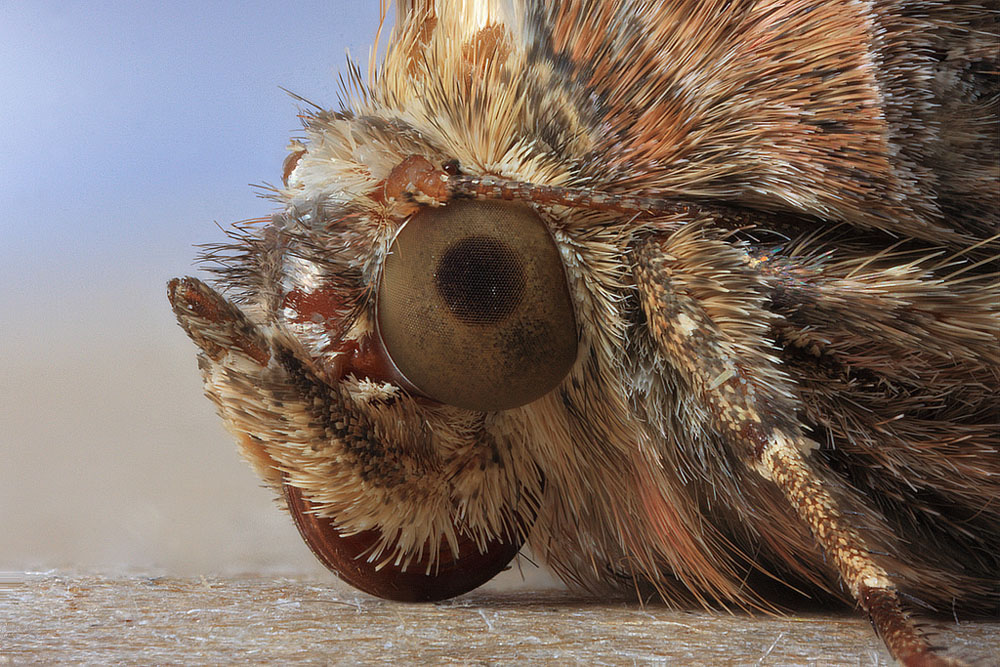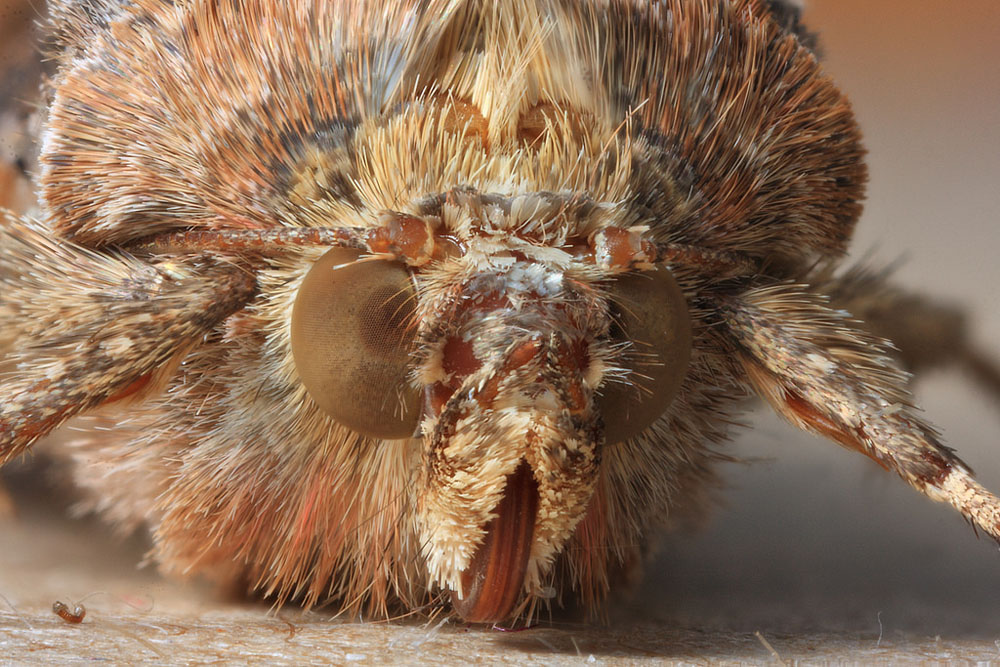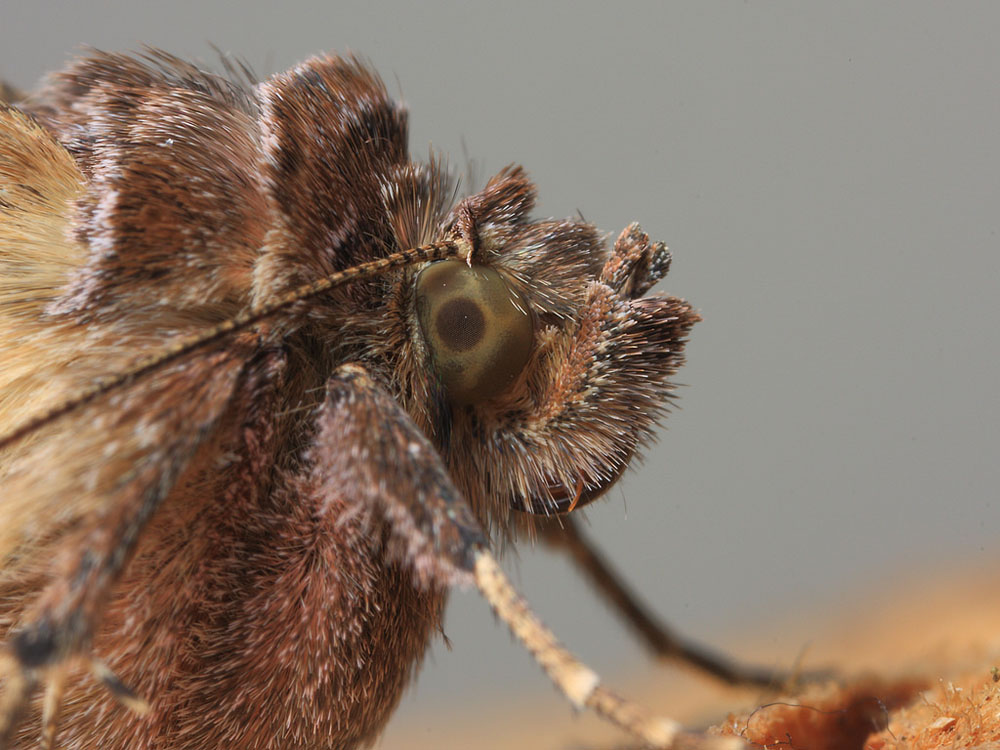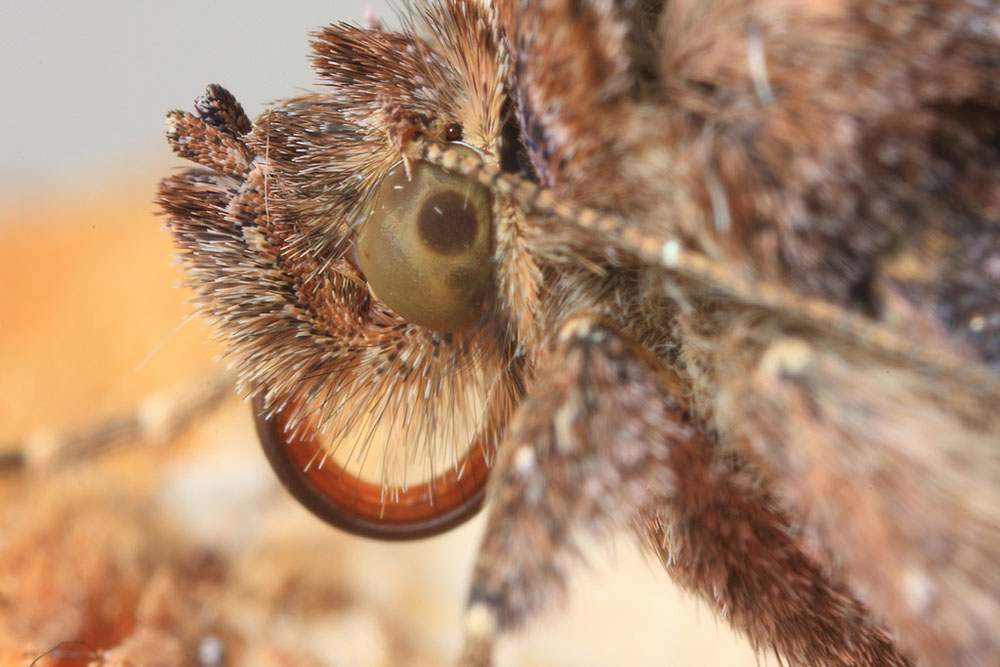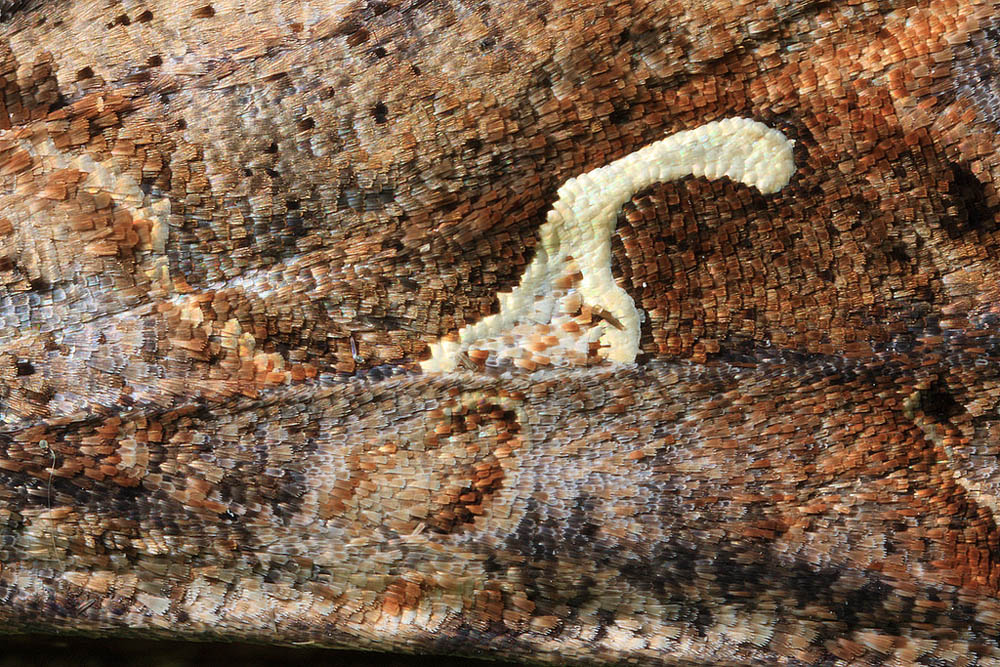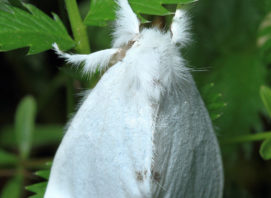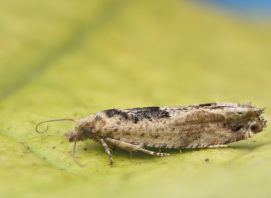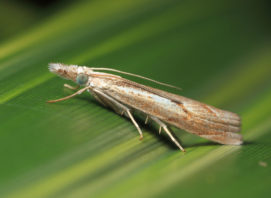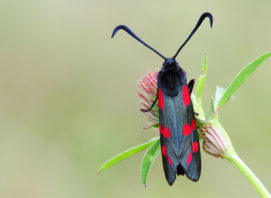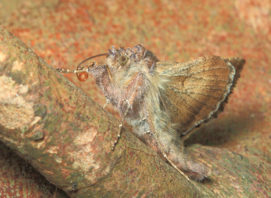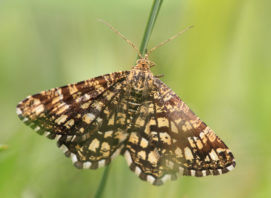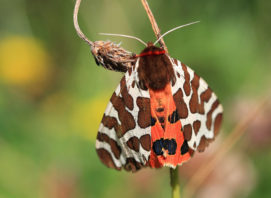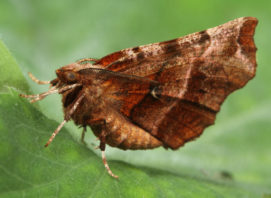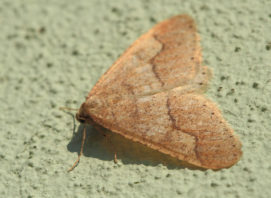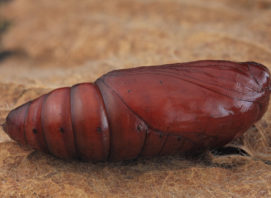Silver Y Close-Up
The Silver Y, one of the most commonly seen day-flying moths, is an immigrant from continental Europe. Coastal sites are good places to search for this species, where thousands can sometimes be seen together, but it can occur almost anywhere. There can be several generations a year and, as spring arrivals often breed, and these are then supplemented by late-arriving immigrants, by autumn the population can be large. They are frequently seen by day, flying frantically as they visit flowers, as well as at dusk, and at night.
The Silver Y is named after the well-defined, continuous ‘Y’-mark on its forewing. Its relative, the Scarce Silver Y usually has a broken “Y’-mark, has silvery-grey marking and a black ground-colour, and tends to be smaller.
The caterpillars take only about a month to become fully grown and vary a great deal in appearance, from pale green to dark olive-green, with paler marking. They will eat almost any low-growing vegetation, whether wild or cultivated. They feed at night and pupate in a flimsy cocoon, with their dark pupa clearly visible, spun between the folds of a leaf. Generally, the immature stages do not survive the winter, but caterpillars have occasionally been found in February. Adult moths have been seen in every month of the year. During the winter, they are thought to have been brought by mild southerly winds sweeping them up from the continent.
Extract taken from: Britain’s Day-Flying Moths, David Newline, Robert Still & Andy Swash, WildGuides.

